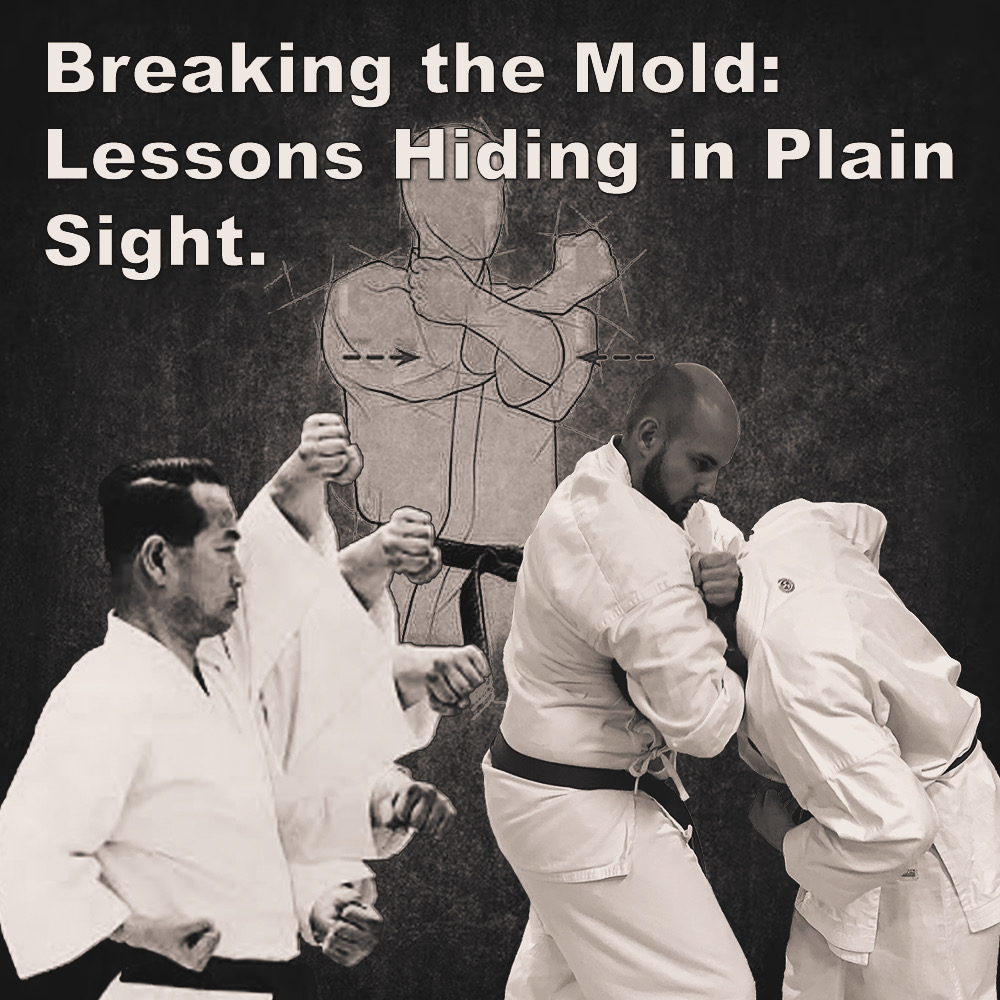
(Approx 2 minute 20 second read)
Ever notice how we’re really good at ignoring stuff that doesn’t fit what we already think?
.
This happens in karate a lot. We get an idea in our heads about, let’s say an upper block, and that’s it. That’s how we see it, period.
.
Of course it doesn’t help when we also learn the Japanese terminology for that upper block, which makes the belief that it could be something completely different impossible to grasp.
.
These pre-conceived ideas are like mental templates. They’re what we use to judge everything new. So, when something comes along that doesn’t match our template, we often just reject it. We learn that an upper block is just a block, and that’s all it can ever be in our minds.
.
Think about anything beyond basic applications. How often do you actually use an upper block – to block? Probably not that much. Your knowledge gets stuck because you’re limited by these early beliefs.
.
Bunkai, analyzing and breaking down applications within the kata, can be difficult to make sense of. Why? Because we think of kata as just a bunch of “basics” strung together which we learned early on in our training. It’s hard to see anything deeper. We’re basically looking at the kata through a white-belt lens.
.
So we view kata as made from the basics, instead of seeing the basics within the kata. We see blocks, punches, and kicks, but not the many applications each movement can have. And if someone shows us an application that looks a little different from how we learned it, we often dismiss it.
.
We’re so used to doing the movements the “basic” way, even if the kata shows something slightly different.
.
It’s like that upper block. We’re told it’s a block, so that’s what it is. End of story. Even if we want to learn more, this mindset holds us back. It’s how we’re taught, and it’s tough to break free from that.
.
And then there’s the whole “levels” thing. We’re told there are beginner, intermediate, and advanced applications. Like the real meaning is hidden, and only a select few know it.
.
This can make us lazy! We stop trying to figure things out for ourselves, as we are told that someone else knows the real meaning and will teach us when we’re ready, or that only certain instructors know these things, or that the real meaning is lost in the sands of time. We wait for someone to tell us the “real” meaning, instead of digging into our “textbooks” – which of course is the kata – ourselves.
.
But here’s the thing – kata isn’t hiding anything from you. It’s all there, in plain sight. The problem isn’t that the meanings are lost; it’s that we’ve been wearing blinders from the start. We’ve been taught to see things one way, and that’s exactly how we keep seeing them.
.
So, take those blinders off, and through them away. Question everything, even the stuff you think you know. Stop waiting for someone to hand you the ‘real’ meaning and start figuring it out yourself. The more you challenge your own assumptions, the more karate opens up to you.
.
Kata isn’t just a collection of movements – it’s a conversation with the past. But if you’re only listening for what you expect to hear, you’ll miss the entire story.
.
.
Inspired by Rich Stamper
